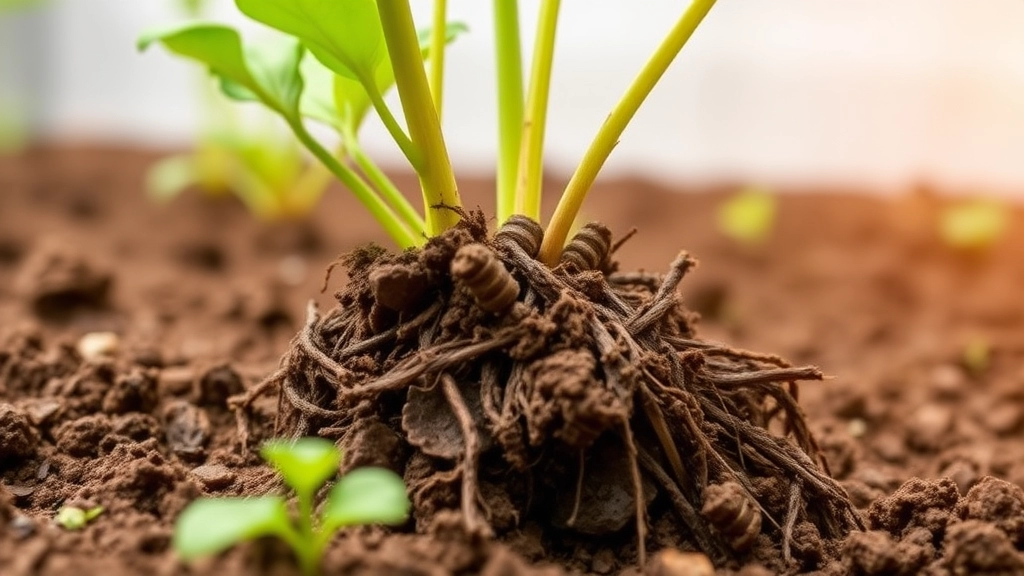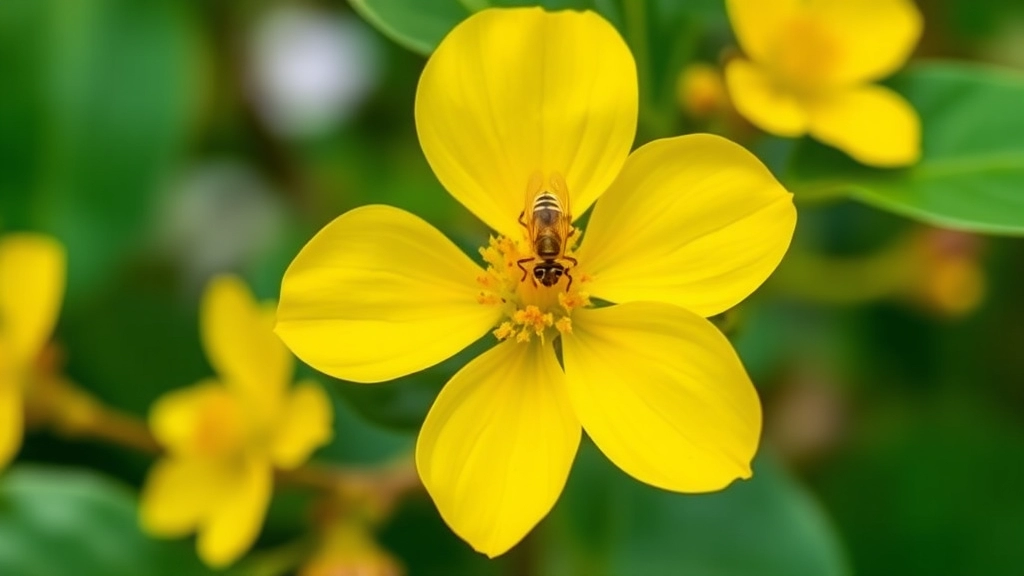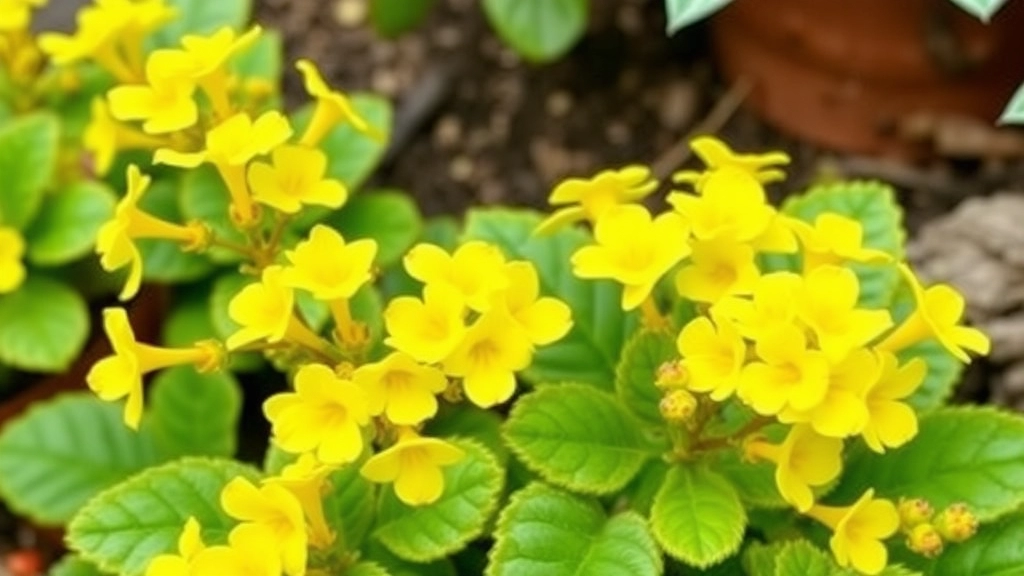Calandiva Yellow Kalanchoe Care
Looking to keep your Calandiva Yellow Kalanchoe thriving? This stunning succulent, known for its vibrant yellow blooms, can brighten up any space. Let’s dive into the essentials of caring for this plant, starting with optimal light conditions and proper watering techniques.
Light Conditions
Ensuring your Calandiva Yellow Kalanchoe gets the right amount of light is crucial for its health. Place it in a spot with plenty of indirect sunlight.
Watering Techniques
Overwatering can lead to root rot, so water sparingly and allow the soil to dry out between waterings. Follow these tips, and your Calandiva will flourish!
Optimal Light Conditions for Yellow Calandiva Kalanchoe
Are you struggling to keep your Yellow Calandiva Kalanchoe thriving? One of the most crucial factors to consider is light.
Understanding Light Requirements
Yellow Calandiva Kalanchoe flourishes under specific light conditions.
- Bright Indirect Light: Ideally, place your plant in a location where it receives bright, indirect sunlight. This encourages healthy growth and vibrant blooms.
- Avoid Direct Sunlight: Direct sunlight can scorch the leaves, leading to unsightly damage. If you notice browning edges, it may be a sign of too much sun. For more information on this issue, check out the causes and solutions for browning leaves.
- Supplement with Artificial Light: If natural light is limited, consider using grow lights. These can provide the necessary spectrum for optimal growth, especially during darker months.
Seasonal Adjustments
The light needs of your Yellow Calandiva may change with the seasons.
- Spring and Summer: During these months, your plant will benefit from longer daylight hours. Ensure it receives adequate light to promote blooming. You can find more tips on optimal sunlight for thriving Kalanchoe plants.
- Autumn and Winter: As days shorten, you may need to adjust its position to maintain sufficient light exposure.
Proper Watering Techniques to Prevent Root Rot

Ever wondered why your Yellow Calandiva Kalanchoe isn’t thriving?
One of the biggest culprits could be improper watering.
Let’s dive into how to keep your plant happy and healthy, avoiding that dreaded root rot.
Understanding Root Rot
Root rot is a sneaky issue that can stem from overwatering.
When the roots sit in soggy soil, they can’t breathe, leading to decay.
This can be a real game-changer for your plant’s health!
Watering Tips
- Check the Soil:
- Stick your finger about an inch into the soil.
- If it feels dry, it’s time to water.
- Water Thoroughly:
- When you do water, give it a good soak until you see water draining out of the bottom.
- This ensures the roots get enough moisture without sitting in it.
- Use Well-Draining Pots:
- Make sure your pot has drainage holes.
- This allows excess water to escape, keeping the roots dry.
- Frequency Matters:
- Generally, watering every 2-3 weeks is a good rule of thumb.
- But always adjust based on your home’s humidity and temperature.
- Seasonal Adjustments:
- In the growing season (spring and summer), your plant may need more water.
- In the dormant months (fall and winter), cut back.
Signs of Trouble
Keep an eye out for signs of overwatering:
- Yellowing leaves
- Wilting despite wet soil
- A musty smell from the pot
If you notice any of these, it’s time to reassess your watering routine.
Soil and Fertilizer Requirements for Healthy Growth
When it comes to nurturing your Yellow Calandiva Kalanchoe, the right soil and fertilizer play a pivotal role in ensuring its vibrant health and blooming potential.
What Soil is Best for Yellow Calandiva?
Choosing the right soil is essential. You want a well-draining mix that prevents water retention, which can lead to root rot. Here are some options:
- Cactus Mix: Specifically designed for succulents, it provides excellent drainage.
- Potting Mix with Perlite: Enhances aeration and drainage while retaining some moisture.
- DIY Mix: Combine equal parts potting soil, sand, and perlite for a tailored solution.
Fertilizer Needs
Yellow Calandiva benefits from regular feeding during its growing season. Here’s how to go about it:
- Type of Fertilizer: Use a balanced, water-soluble fertilizer, preferably one formulated for succulents.
- Frequency: Feed every 4-6 weeks during spring and summer. Reduce feeding in autumn and winter when the plant enters dormancy.
- Dilution: Always dilute the fertilizer to half the recommended strength to avoid burning the roots.
Signs of Nutrient Deficiency
If your plant is struggling, you may notice:
Common Pests and Diseases Affecting Yellow Calandiva

As you nurture your Yellow Calandiva, it’s crucial to keep an eye out for potential threats that can hinder its growth and blooming. Pests and diseases can quickly turn a vibrant plant into a struggling one, so understanding what to watch for is key.
Common Pests
- Mealybugs: These small, white, cotton-like insects hide in the leaf axils and can cause significant damage by sucking sap.
- Spider Mites: Tiny and often invisible, these pests create fine webbing and can lead to leaf discoloration and drop.
- Aphids: These small green or black insects cluster on new growth, leading to stunted growth and distorted leaves.
Common Diseases
- Root Rot: Often caused by overwatering, this disease leads to dark, mushy roots and can be fatal if not addressed quickly.
- Powdery Mildew: A white, powdery fungus that appears on leaves, often due to poor air circulation and high humidity.
- Leaf Spot: Characterised by brown or black spots on the leaves, this condition can be caused by fungal infections or excessive moisture.
Prevention Tips
- Regular Inspection: Check your plant weekly for any signs of pests or disease.
- Proper Watering: Avoid overwatering to prevent root rot. Ensure the pot has good drainage.
- Air Circulation: Place your Calandiva in a location with adequate airflow to reduce humidity and prevent fungal diseases.
Have you ever wondered why your Yellow Calandiva Kalanchoe isn’t blooming as vibrantly as you’d hoped?
Encouraging blooming and extending the life of these stunning flowers requires a few strategic actions.
Here are some essential tips to help your plant thrive:
– **Optimal Light Exposure**: Ensure your Yellow Calandiva receives bright, indirect sunlight. Too much direct sunlight can scorch the leaves, while too little light can inhibit blooming.
– **Temperature Control**: Keep your plant in a warm environment, ideally between 20-25°C (68-77°F). Sudden temperature changes can stress the plant and reduce flowering.
– **Regular Pruning**: After blooming, prune away dead flowers and leaves. This not only tidies up the plant but encourages new growth and future blooms.
– **Watering Routine**: Water your Calandiva when the top inch of soil feels dry. Overwatering can lead to root rot, while underwatering may cause wilting.
– **Fertilization**: Use a balanced, water-soluble fertilizer every four to six weeks during the growing season. This provides the nutrients necessary for healthy blooms.
– **Stress Induction**: For some plants, a little stress can promote blooming. Consider reducing watering slightly before the blooming season to encourage flower production.
For more detailed guidance, you can check out these proven tips to get your Kalanchoe to bloom again and additional yellow Kalanchoe care tips for thriving blooms.
FAQs on Yellow Calandiva Kalanchoe Care
What is the main cause of root rot in Yellow Calandiva Kalanchoe?
Root rot is primarily caused by overwatering. When the roots sit in soggy soil, they can’t breathe, leading to decay and potential plant death.
How can I tell if my Yellow Calandiva Kalanchoe needs water?
Stick your finger about an inch into the soil. If it feels dry, it’s time to water. This is a good indicator that your plant needs moisture.
What are the best watering practices for Yellow Calandiva Kalanchoe?
Water thoroughly until you see water draining out of the bottom of the pot. Ensure you use well-draining pots with drainage holes to prevent water from sitting in the soil.
How often should I water my Yellow Calandiva Kalanchoe?
Generally, watering every 2-3 weeks is a good rule of thumb. However, adjust based on your home’s humidity and temperature to meet the plant’s needs.
What adjustments should I make to watering in different seasons?
During the growing season (spring and summer), your plant may need more water. In the dormant months (fall and winter), reduce the watering frequency.
What are the signs of overwatering in Yellow Calandiva Kalanchoe?
Signs of overwatering include yellowing leaves, wilting despite wet soil, and a musty smell from the pot. These indicate that you should reassess your watering routine.
What pests commonly affect Yellow Calandiva Kalanchoe?
Common pests include:
- Mealybugs: Small, white, cotton-like insects that hide in leaf axils and suck sap.
- Spider Mites: Tiny pests that create fine webbing and cause leaf discoloration and drop.
- Aphids: Small green or black insects that cluster on new growth, leading to stunted growth and distorted leaves.
What diseases should I watch out for in Yellow Calandiva Kalanchoe?
Common diseases include:
- Root Rot: Caused by overwatering, leading to dark, mushy roots.
- Powdery Mildew: A white, powdery fungus on leaves due to poor air circulation and high humidity.
- Leaf Spot: Brown or black spots on the leaves, often caused by fungal infections or excessive moisture.
How can I prevent pests and diseases in my Yellow Calandiva Kalanchoe?
Prevention tips include:
- Regular Inspection: Check your plant weekly for any signs of pests or disease.
- Proper Watering: Avoid overwatering to prevent root rot and ensure the pot has good drainage.
- Air Circulation: Place your Calandiva in a location with adequate airflow to reduce humidity and prevent fungal diseases.
References
-
Gardening Know How: Kalanchoe Calandiva Care
-
The Spruce: How to Grow and Care for Kalanchoe Calandiva
-
Old Farmer’s Almanac: Kalanchoe
